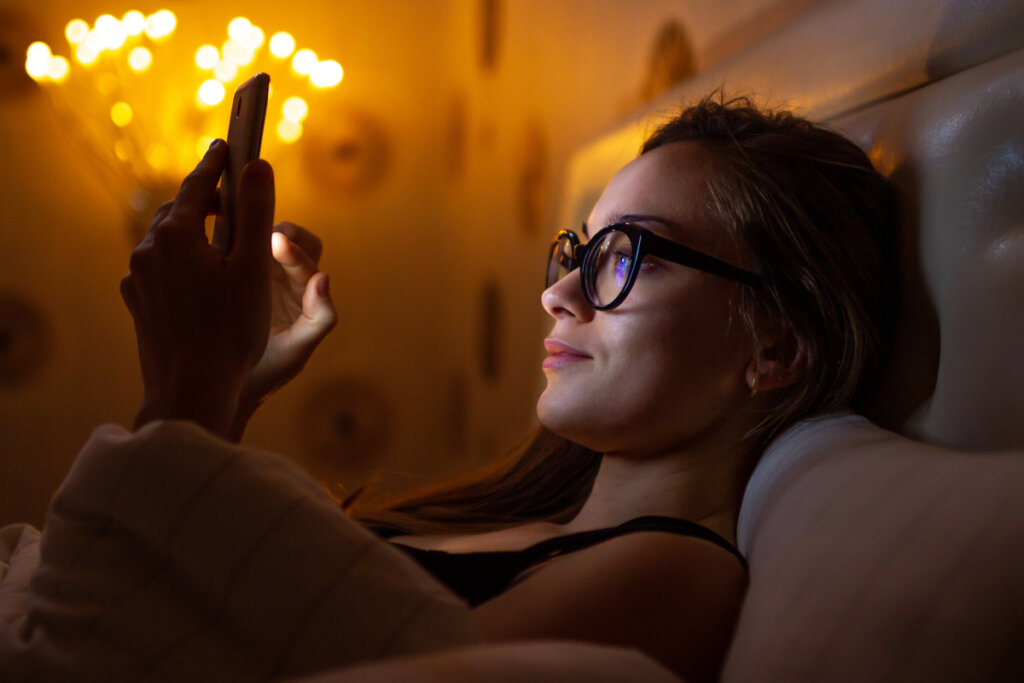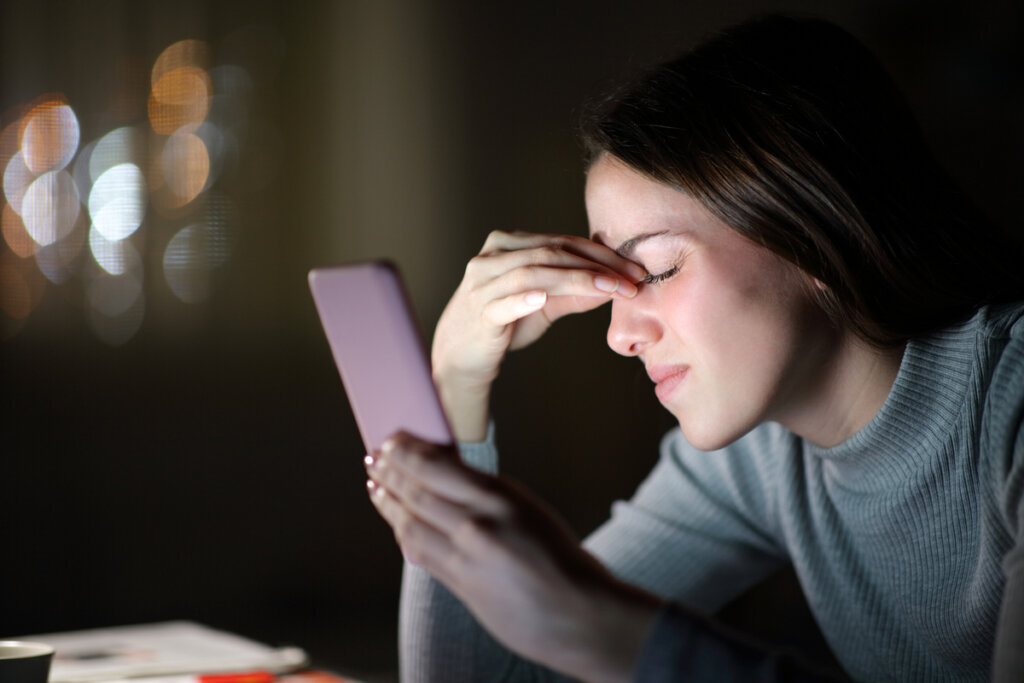The Relationship Between Artificial Night Light and Depression


Written and verified by the psychologist Valeria Sabater
It’s known that light pollution in cities often causes insomnia, not to mention the obvious environmental impact. Likewise, in recent years the direct relationship between artificial night light and depression seems evident. In fact, LED bulbs, cell phone screens, computers, and televisions, etc are becoming serious enemies to our psychological health.
When electric light appeared, the world replaced gas with electricity, and nights became filled with light. However, other changes also began to take place. For example, night-time jobs increased and factories began to work without interruption.
With the predominance of artificial light, our biological rhythms began to alter, as did those of animals, especially birds and insects. Therefore, a direct consequence of the progress was the increase in insomnia in the population as well as changes in mood. Biodiversity has also been affected.
We’ve psychologically adapted to artificial light at night. However, what we don’t tend to realize is that we haven’t biologically adapted, and the consequences are multiple.

The relationship between artificial night light and depression
Over the last 130 years, we’ve become adapted to a life mediated by electric light. In fact, we might joke that it’s only rural people who live in a way that’s adjusted to the rhythms of nature and also our biology. Because, in reality, most of us live our lives completely misaligned with the behavior of the solar cycle.
Although some of us may like to define ourselves as night owls, the truth is that we’re beings of light. Indeed, we’re governed by circadian rhythms in which total darkness is necessary during certain parts of the day so our bodies can carry out important hormonal tasks. In fact, substituting artificial light for darkness completely alters our biological rhythms.
However, modern life is constructed in such a way that we work at night and also dedicate part of our leisure time to these hours of darkness. Nevertheless, sometimes, almost without realizing it, we end up paying a silent price for this way of existence.
Artificial night light alters our brain structures
Neuroscientists from Ohio State University (United States) conducted some interesting research on this topic. They conducted experiments in a laboratory with mice. They discovered that exposure to artificial light reduced the production of melatonin in the mice. In fact, the lack of this multipurpose hormone left the animals listless and weakened.
The researchers also observed a drastic decrease in hippocampus size in the mice. This occurrence is directly associated with depressive disorders. Furthermore, the mice began to produce a higher level of a specific protein associated with tumor necrosis. Therefore, it wasn’t only the relationship between artificial night light and depression that they discovered, but other associations as well.
The blue light of our devices
It isn’t the same using our electronic devices during the day as at night. In fact, ideally, once night falls, we should put aside all technology, whether they be cell phones, laptops, or tablets. In this way, our brain wouldn’t suffer the impact of the blue light of these devices, which has a more harmful effect at night.
Our retinas contain a photopigment called melanopsin that’s especially sensitive to waves of blue light. Overstimulation has a serious impact on our circadian rhythms. It also alters our production of melatonin. This was explained in a study published in the journal, Nature.
The hyperactivation of melanopsin also has other effects. It activates neuralgic networks of the thalamus that end up also altering areas of the prefrontal cortex, the hippocampus, and the amygdala. All of this alters our mood, leading to major depressive disorders.

How to reduce the impact of artificial lights on health
We know that artificial night light and depression are directly related. However, what’s also clear is that we’re not now able to fully adapt to the cycles of sunlight. Indeed, the modern world simply can’t conceive of going to bed when the sun goes down and getting up at dawn.
Therefore, we’ll continue working night shifts and going to bed between 11 pm and midnight. However, what can we do to reduce the impact of artificial lights on our mood? Here are some tips:
Incandescent bulbs
Many cities use incandescent bulbs which produce a longer yellow range wavelength light. These don’t have as much impact on melanopsin.
Amber lights
Amber lights aren’t harmful to insects, birds, or humans, and reduce light pollution.
Blue light filters and settings on our screens
Currently, many of our devices allow us to adjust the brightness and even apply the night light filter to avoid the damage that blue light causes us.
Reduce (if possible) exposure at night
Ideally, at least two hours before going to sleep, we should turn off all our electronic devices. Our brains would certainly appreciate it. Because we need an adequate production of melatonin. Also, we’d sleep better. These are small actions that, although they might be a little inconvenient, given our lifestyle, will directly mediate our well-being.
All cited sources were thoroughly reviewed by our team to ensure their quality, reliability, currency, and validity. The bibliography of this article was considered reliable and of academic or scientific accuracy.
- Bedrosian, T. A., & Nelson, R. J. (2017). Timing of light exposure affects mood and brain circuits. Translational psychiatry, 7(1), e1017. https://doi.org/10.1038/tp.2016.262
- Bedrosian, T., Nelson, R. Influence of the modern light environment on mood. Mol Psychiatry 18, 751–757 (2013). https://doi.org/10.1038/mp.2013.70
- Brown, M. J., & Jacobs, D. E. (2011). Residential light and risk for depression and falls: results from the LARES study of eight European cities. Public health reports (Washington, D.C. : 1974), 126 Suppl 1(Suppl 1), 131–140. https://doi.org/10.1177/00333549111260S117
This text is provided for informational purposes only and does not replace consultation with a professional. If in doubt, consult your specialist.








